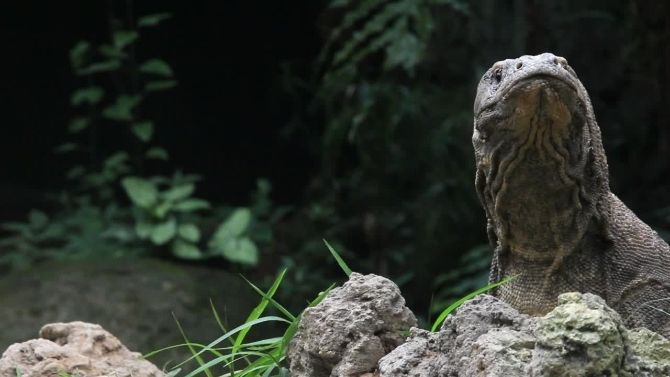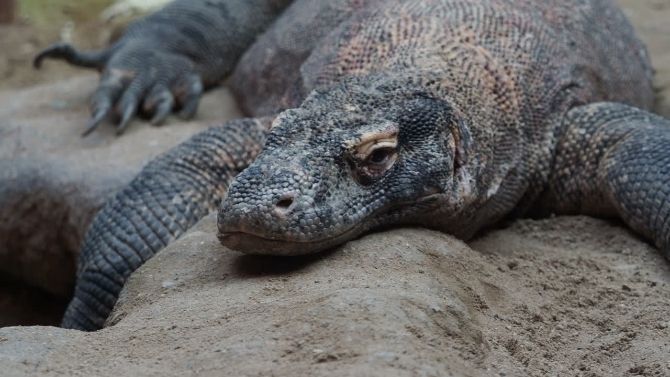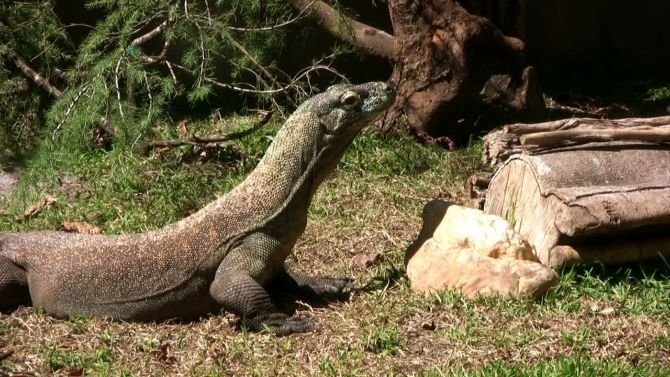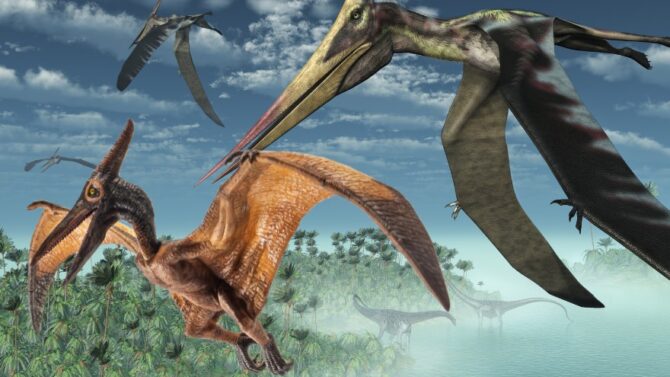If you’ve ever found yourself gazing at the rugged beauty of a Komodo Dragon and wondered, “Can humans actually eat that?” then you’re not alone. The question might sound bizarre, but it taps into broader topics about the consumption of exotic animals, the balance of ecosystems, and cultural norms.
In this blog post, we’re discussing the intriguing world of the Komodo Dragon, exploring the possibility of consumption and unearthing some unexpected truths.
The Basics
The Komodo Dragon, a magnificent beast, is native to the islands of Indonesia. Understanding its natural habitat and significance is essential before diving into the topic of consumption.
The Komodo’s Natural Habitat
Komodo Dragons are found on a few islands in Indonesia, with the majority residing on the island of Komodo. These creatures are the heaviest lizards on Earth and can weigh up to 200 pounds. Their natural habitat is hot and dry, and they are equipped with strong senses of smell and hearing, making them apex predators in their environment.
- Island Locations: Komodo, Rinca, Flores, and Gili Motang.
- Hunting Habits: They feed on carrion and hunt animals, including deer, pigs, and occasionally birds.
Cultural and Conservation Significance

These creatures are not just any random reptiles. In local Indonesian cultures, they are viewed with a mix of reverence and fear. Komodo Dragons have been subjects of myths, and they play an essential role in local ecosystems.
- Role in Ecosystem: As apex predators, they keep the population of other animals in check.
- Status: Listed as vulnerable by the International Union for Conservation of Nature (IUCN) due to threats like habitat loss and tourism disturbances.
Can You Eat a Komodo Dragon?
Let’s address the burning question on everyone’s mind. While there isn’t a one-size-fits-all answer, it’s a mix of cultural, biological, and ecological factors that provide clarity.
Biological Implications
At a glance, the meat of a Komodo Dragon might look appealing to some adventurous eaters. However, there are significant biological reasons why this may not be a good idea.
- Saliva: The dragon’s saliva is teeming with bacteria. While some may argue that cooking would kill these bacteria, the risk remains high.
- Venom: Recent research has suggested that Komodo Dragons might have venom glands. Consuming meat contaminated with venom poses obvious health risks.
- Taste and Texture: No widespread records indicate what a Komodo Dragon tastes like. However, considering their diet and lifestyle, meat might not be the most palatable.
Cultural and Legal Aspects
While the biological aspects might deter consumption, the cultural and legal reasons are even more compelling.
- Local Taboos: Many local communities hold the Komodo Dragon in reverence, and consuming such an animal would be considered disrespectful.
- Conservation Laws: Given their vulnerable status, there are strict laws against harming or killing these creatures. This includes legal protections at national and international levels.
Ecosystem Balance and Ethics
Delving deeper, it’s essential to recognize the impact of such a hypothetical scenario where Komodo Dragons were consumed. It’s not just about a single species; it’s about the balance of nature and our responsibilities as global citizens.
Ecological Consequences

The removal or reduction of an apex predator from an ecosystem can lead to unforeseen and often detrimental consequences.
Prey Population Surge
Without Komodo Dragons keeping their prey numbers in check, there could be an explosion in populations of animals like deer or pigs, leading to other ecological problems.
Biodiversity Loss
A reduction in Komodo Dragon numbers could affect the islands’ unique biodiversity, potentially causing irreversible damage.
Ethical Considerations
Beyond the ecological, there’s an ethical dimension to this question. Is it right to consume an animal, especially one that’s vulnerable or revered, just because of human curiosity?
- Respect for Nature: Many would argue that just because we can do something doesn’t mean we should. This sentiment holds when considering the consumption of such a unique creature.
- Global Responsibility: As the world grapples with issues like climate change and biodiversity loss, the onus is on us to act responsibly and sustainably.
Exotic Animals and Consumption
When discussing the edibility of Komodo Dragons, it’s worth noting that humans have a long history of dietary experimentation. Let’s check out a broader perspective on consuming exotic creatures and the implications.
Global Trends in Consuming Exotic Animals

Throughout history, humans have consumed a wide variety of animals, driven by necessity, curiosity, or luxury.
- Historical Context: From Roman feasts featuring peacocks to indigenous tribes consuming insects or other unique local fauna, our palate has been diverse.
- Modern Curiosity: With globalization, people travel more and have access to a variety of foods, leading to adventurous eating—like trying insects in Thailand or snake wine in Vietnam.
Risks and Considerations
While trying unique foods can be an exciting experience, it comes with its share of risks and considerations.
- Health Risks: Just as with the Komodo Dragon, many exotic animals may carry pathogens or toxins that are harmful when ingested.
- Conservation Concerns: Overharvesting creatures for consumption can lead to their decline or even extinction, as seen with some fish species due to the sushi industry’s demands.
Bridging Cultural Divides: Understanding Over Consumption
Exploring the subject of Komodo Dragons opens the door to the broader concept of cultural understanding. Why do certain societies consume particular animals, and how can we bridge the gaps of understanding?
Consumption in Cultural Context

Throughout history, what’s considered edible varies widely from one culture to another. This variety is influenced by factors like environment, religion, and tradition.
Cultural Relativism
Recognizing that dietary choices are deeply ingrained in cultural contexts can foster understanding. For instance, while some might cringe at the thought of eating insects, they are staple proteins in many societies.
Historical Necessities
Often, the consumption of certain animals arose from survival needs. Over time, these became delicacies or integral parts of culinary traditions.
Promoting Intercultural Dialogue
Rather than judging others’ dietary choices, opening channels for dialogue can promote mutual understanding and respect.
- Travel and Experience: Engaging directly with other cultures, sampling their cuisines, and understanding the history behind certain dishes can bridge misunderstandings.
- Educational Platforms: Workshops, culinary classes, or documentaries highlighting global cuisines can demystify foreign foods and dietary choices.
FAQs
Are there any societies known to have historically consumed Komodo Dragons?
While the Komodo Dragon has been integral to local myths and stories in Indonesia, there is no widespread historical evidence suggesting that any society traditionally consumed Komodo Dragons as a regular part of their diet.
What other reptiles are commonly consumed around the world?
Various reptiles are consumed in different cultures globally. Examples include alligators and crocodiles in certain parts of the U.S. and Africa, iguanas in Central America, and turtles in various regions, among others.
However, the consumption of each of these reptiles comes with its own set of cultural, ethical, and environmental implications.
Is it illegal to hunt or harm a Komodo Dragon?
Yes, the Komodo Dragon is a protected species, and it is illegal to hunt, capture, or harm them in any way. Indonesia has strict laws in place to protect these creatures, given their vulnerable status and their importance to the local ecosystem and culture.
How long have Komodo Dragons existed on Earth?
Komodo Dragons are ancient creatures that have been around for millions of years. Fossil evidence suggests that their ancestors date back to around 4 million years ago.
However, the current form of the Komodo Dragon we see today has likely been around for at least several hundred thousand years.
Apart from their size, what makes Komodo Dragons different from other monitor lizards?
Komodo Dragons, while renowned for their size, also possess a unique combination of attributes not found in other monitor lizards.
They have a distinct set of bacteria in their saliva, a speculated venom gland, and specialized hunting techniques. Additionally, their adaptation to their specific island habitat also differentiates them from other monitor species.
What’s the lifespan of a Komodo Dragon in the wild?
In the wild, a Komodo Dragon can live up to 30 years. Their longevity is attributed to their position as apex predators, meaning they face few threats.
However, the actual lifespan can vary based on factors like habitat conditions, food availability, and human disturbances.
Final Words
While the notion of consuming a Komodo Dragon might spark curiosity, the reasons against it—biological, cultural, ecological, and ethical—are overwhelming.
They remind us of the intricate web of life on Earth and our place within it. Sometimes, the most exciting culinary adventure is learning and appreciating from a distance rather than consumption.





